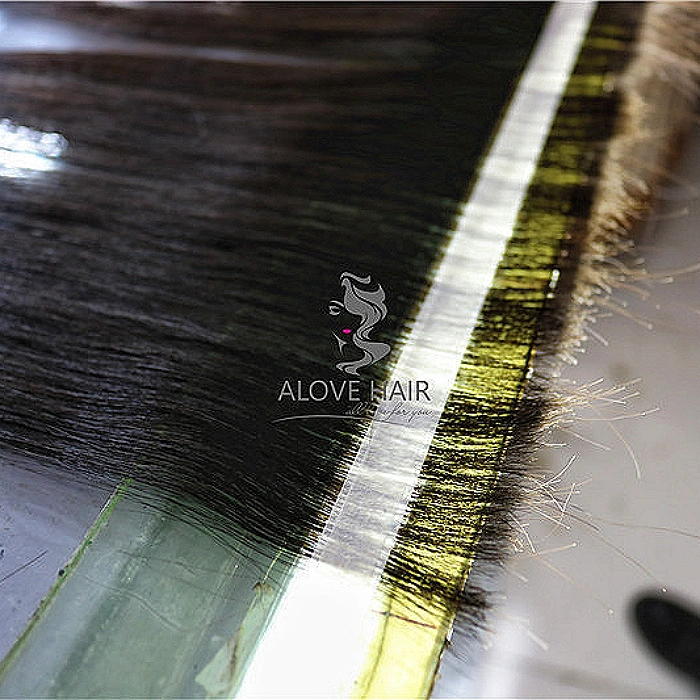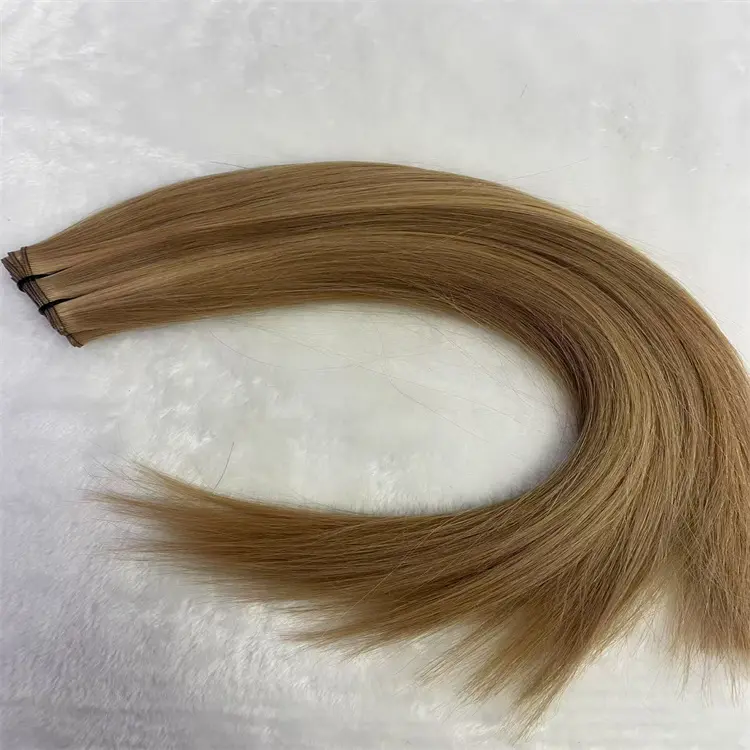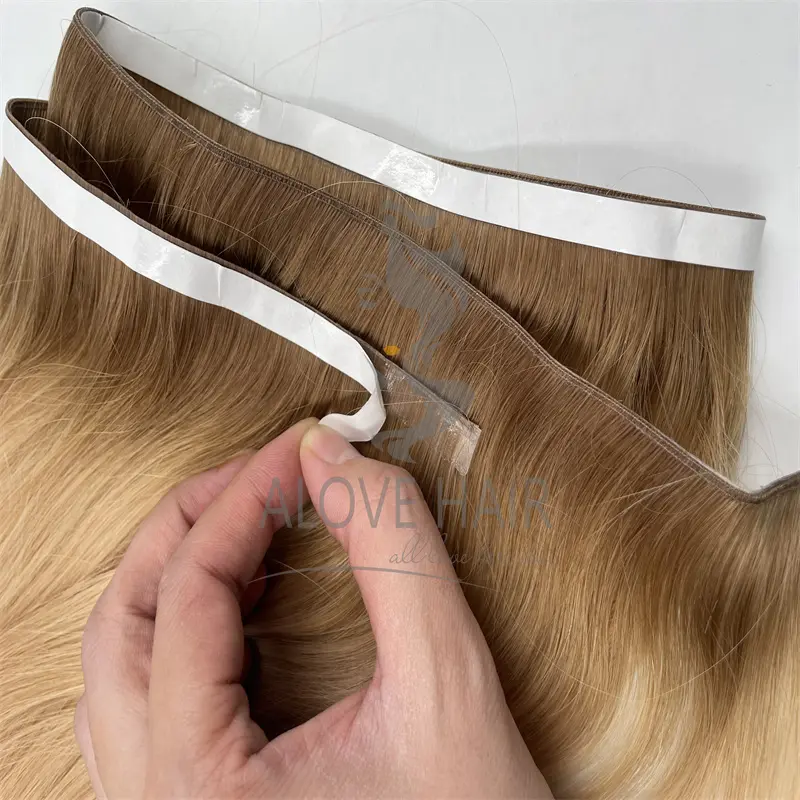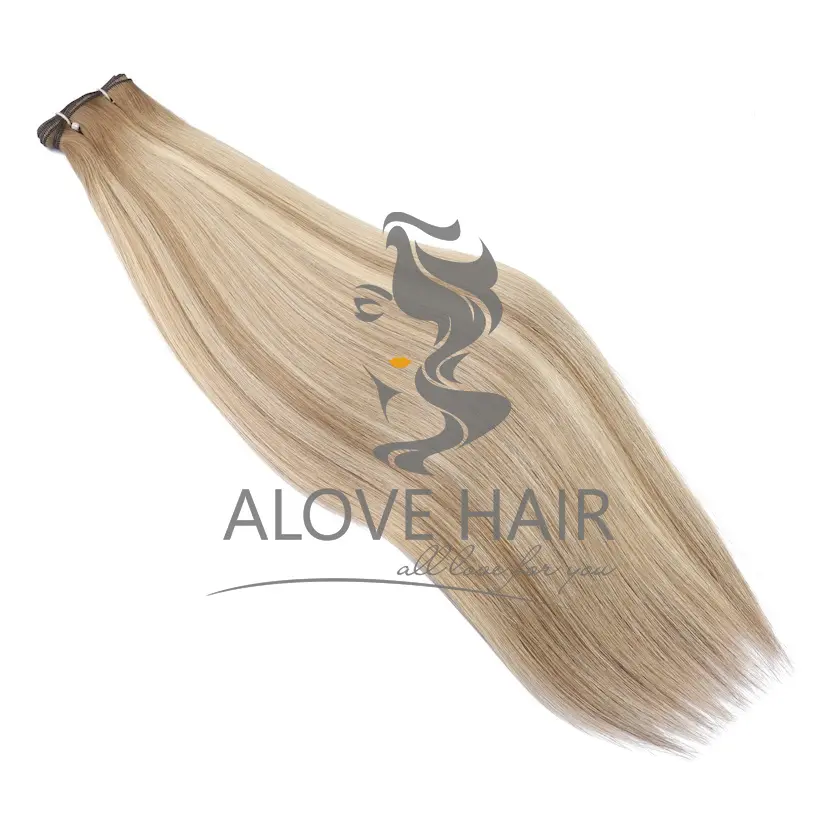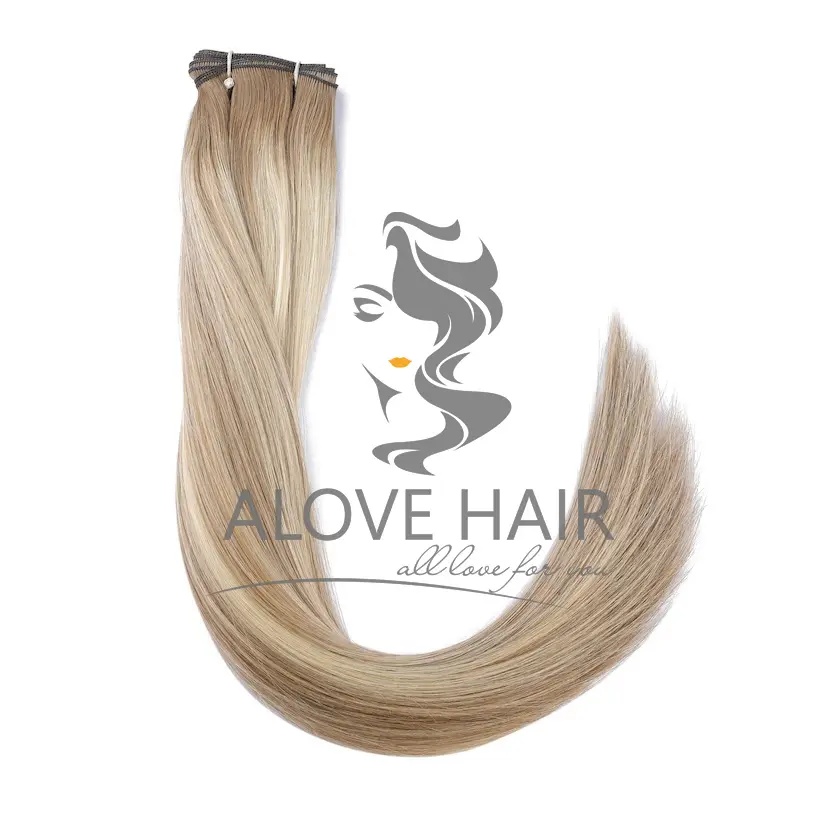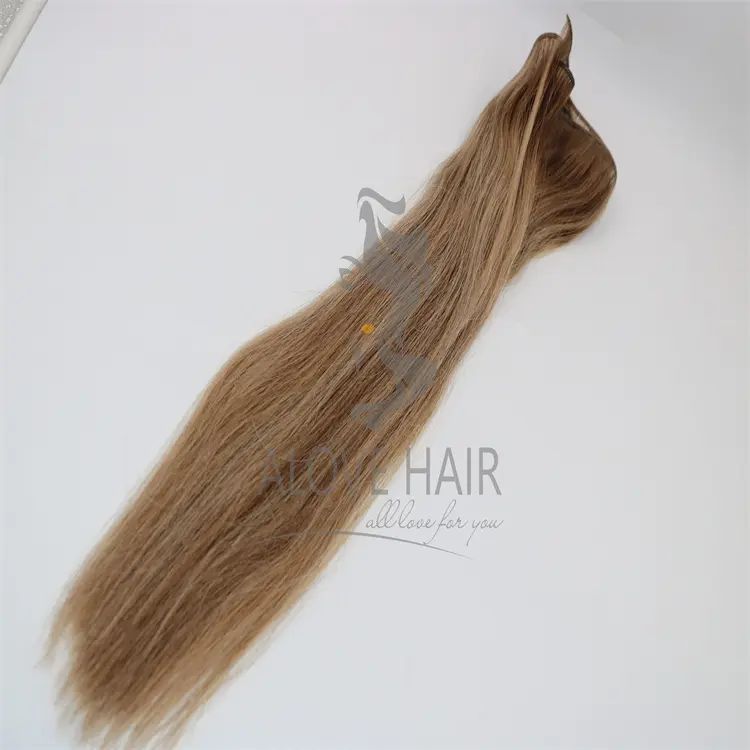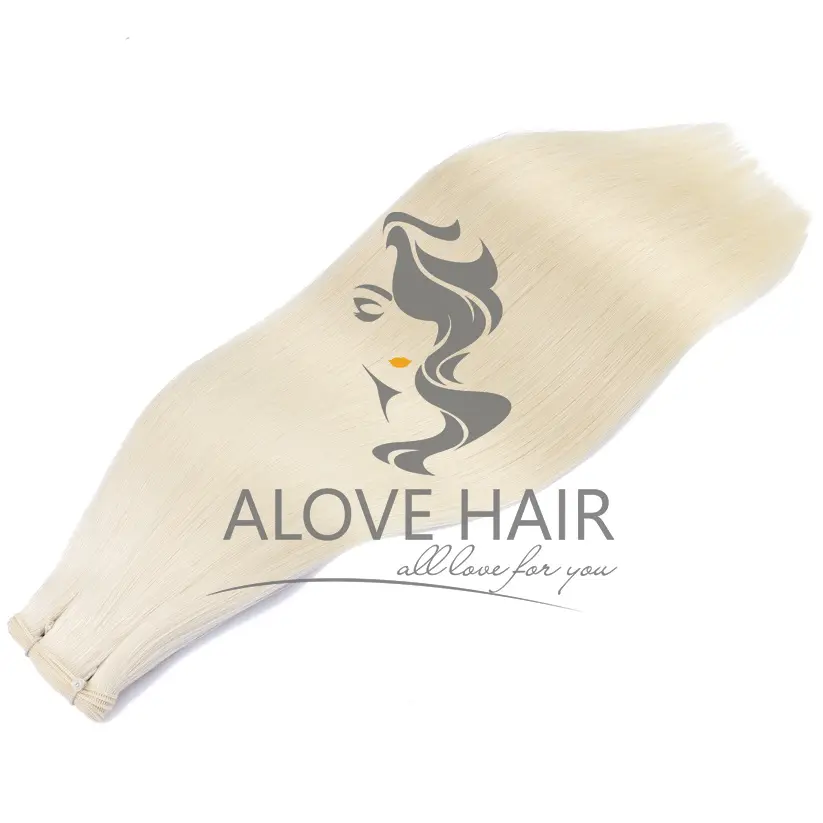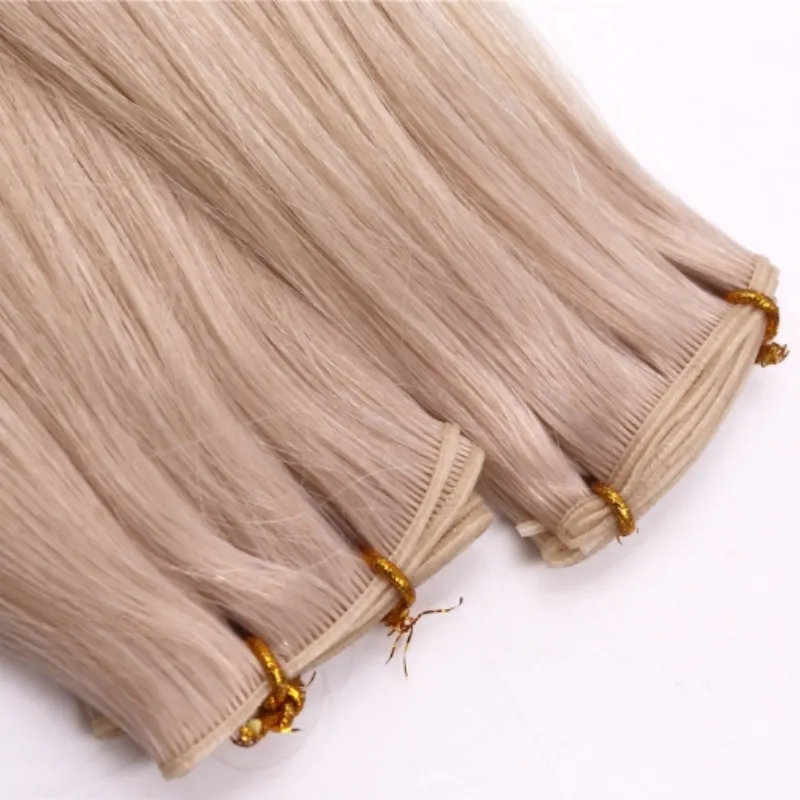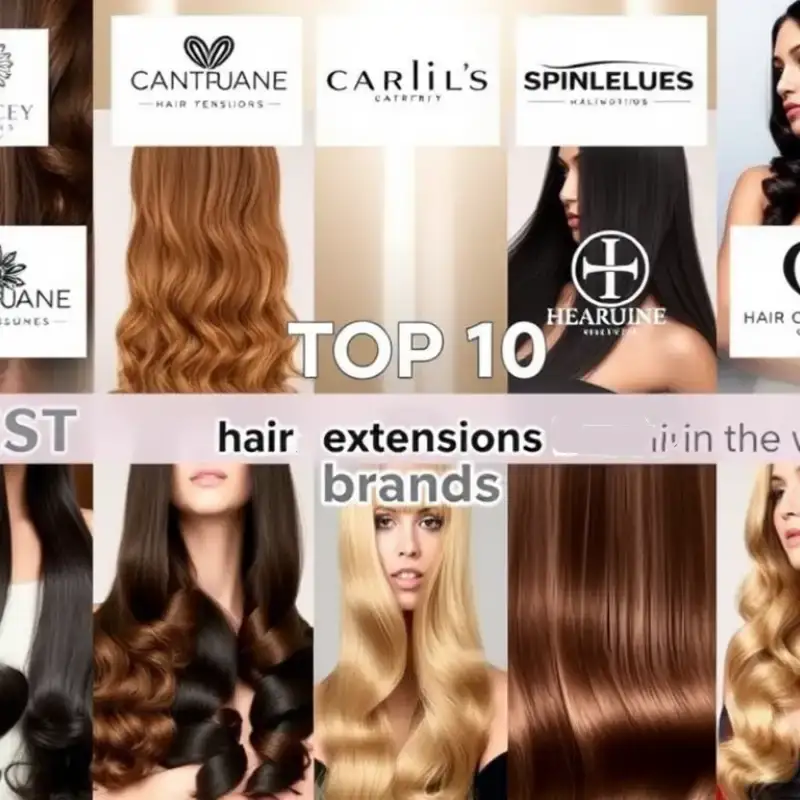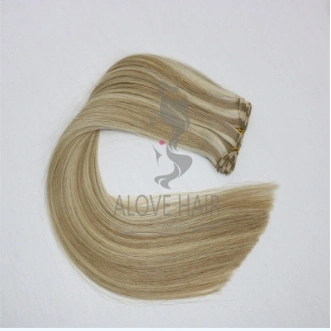The global hair extension market is booming, projected to reach $10 billion by 2025, yet a staggering 70% of buyers end up with low-quality products that tangle, shed, or look unnaturally shiny. Why? Because most shoppers dive in without understanding the five make-or-break factors that determine whether their extensions will blend seamlessly or become a costly disaster.
If you've ever wondered, "Why do my extensions always matte at the roots?" or "How do celebrities make theirs look so real?", you're not alone. The truth is, even expensive human hair extensions can fail if they're the wrong length for your face shape, have mismatched texture, or come from unethically processed sources. A 300setmightlastayear,whilea"bargain"300setmightlastayear,whilea"bargain"80 purchase could shed within weeks—unless you know what to look for.
This guide cuts through the confusion. We'll decode industry jargon (like "Remy" and "virgin hair"), reveal how to spot acid-damaged strands disguised as premium products, and explain why Brazilian hair costs 3x more than Indian alternatives. Whether you're a first-time buyer or a salon regular, these evidence-based tips—backed by hairstylists and ethical suppliers—will help you invest wisely. No more wasted money or awkward "hair fails." Just the confidence to choose extensions that look and feel like they're truly yours.
What Are Human Hair Extensions?
Human hair extensions are premium hairpieces made from 100% real human hair, designed to add length, volume, or highlights to natural hair. Unlike synthetic extensions (made from plastic fibers like kanekalon), human hair moves, feels, and behaves like biological hair because it is biological hair. This fundamental difference affects everything from styling versatility to long-term wearability.
Human vs. Synthetic: The Key Differences
Material & Origin
Human Hair: Sourced from donors (often from countries like India, Brazil, or Vietnam), processed to maintain cuticle alignment (in "Remy" grade), and sterilized.
Synthetic: Mass-produced from petroleum-based polymers, pre-styled with fixed patterns.
Styling Flexibility
Human hair can be heat-styled (curled, straightened at up to 400°F/200°C), colored (by professionals), and washed like natural hair.
Synthetic hair melts under high heat (>300°F/150°C) and cannot be recolored without damage.
Lifespan
Well-maintained human hair lasts 6–12 months (or longer with proper care).
Synthetic hair typically lasts 4–8 weeks before fraying or tangling irreversibly.
Why Choose Human Hair?
1. Natural Appearance
The cuticle layer of human hair reflects light like biological hair, avoiding the artificial "shine" of synthetic fibers. It blends seamlessly with your natural hair texture—whether straight, wavy, or tightly coiled.
2. Heat-Friendly Versatility
Human hair extensions allow daily styling with tools (blow dryers, flat irons, curling wands). You can even swim or exercise without fear of irreversible frizzing (unlike synthetic hair).
3. Long-Term Value
Though pricier upfront (human hair costs 150–150–600 vs. synthetic's 20–20–100), the extended lifespan and reusable nature make it cost-effective over time. High-quality human hair can be reinstalled multiple times if removed carefully.
The Caveat: Not All "Human Hair" Is Equal
Beware of misleading labels:
"Virgin Human Hair": Unprocessed, highest quality.
"Remy Hair": Cuticles intact and aligned (reduces tangling).
*"Non-Remy"*: Cuticles stripped or misaligned (prone to matting).
For the most natural results, opt for Remy or virgin hair that matches your hair’s density and porosity.
The 5 Key Factors When Buying Human Hair Extensions
Choosing the perfect human hair extensions can be overwhelming—especially with so many options available. To ensure you invest in high-quality extensions that blend seamlessly and last long, you need to understand the five critical factors: length, texture, origin, processing method, and price.
This in-depth guide will break down each factor, helping you make an informed decision and avoid common pitfalls.
1. Length: Finding the Perfect Match
How to Measure Hair Extensions
Human hair extensions are measured from the root (top weft or clip) to the tip (ends). The most common lengths available are:
12–14 inches (Shoulder-length)
16–18 inches (Mid-back)
20–22 inches (Waist-length)
24–30+ inches (Hip-length or longer)
Recommended Length for First-Time Buyers
If you're new to extensions, 16–20 inches is ideal because:
Easier to blend with natural hair
Low maintenance compared to very long extensions
Versatile styling (can be worn straight, curled, or in updos)
Pro Tip: If your natural hair is short (chin-length), avoid extensions longer than 20 inches—they may look unnatural and strain your roots.
2. Texture: Matching Your Natural Hair
The texture of your extensions must match your natural hair for a flawless blend. The main categories are:
A. Straight Hair
Silky Straight: Ultra-smooth, best for sleek styles.
Body Wave: Slight bend, adds volume without curls.
Best for: Asian, Caucasian, or fine hair types.
B. Wavy Hair
Loose Waves (Beachy): Natural-looking, effortless texture.
Deep Waves: More defined curls, great for volume.
Best for: Those with naturally wavy or layered hair.
C. Curly/Kinky Hair
Curly (Brazilian/Virgin): Bouncy, defined curls.
Kinky (Afro-Textured): Tight coils, matches 4A-4C hair.
Best for: Afro-textured or very curly hair.
Regional Hair Texture Differences
Brazilian Hair: Thicker, coarser—ideal for voluminous styles.
Indian Hair: Softer, silkier—great for straight or wavy blends.
Vietnamese Hair: Fine and lightweight—perfect for Asian hair types.
Warning: If your extensions don’t match your natural texture, they’ll look obviously fake. Always check before buying!
3. Origin: Where Your Hair Comes From Matters
The country of origin affects quality, durability, and ethics. Here's a breakdown:
A. Vietnamese Hair
* High shine, fine strands
* Best for Asian hair (similar thickness)
* Rare in Western markets, often more expensive
B. Indian Hair (Temple Hair)
* Most affordable (large supply)
* Soft, versatile for straight/wavy styles
* Ethical concerns (some sourced from exploitative practices)
C. Brazilian Hair
* Thick, durable, holds curls well
* Great for voluminous weaves
* Heavier, may strain fine hair
D. Peruvian/Mongolian Hair
* Luxury-grade, ultra-soft
* Rare, high-end extensions
* Very expensive ($500+ per bundle)
Ethical Choice: Remy vs. Non-Remy
Remy Hair: Cuticles intact & aligned → less tangling, longer lifespan.
Non-Remy Hair: Cuticles stripped → prone to matting, sheds faster.
Always choose Remy hair for quality!
4. Processing: How the Hair Is Treated
The processing method determines longevity and damage risk:
A. Virgin Hair (Highest Quality)
* Never chemically treated
* Strongest, longest-lasting
* Most expensive (300–300–800 per bundle)
B. Dyed/Treated Hair
* Pre-colored (blonde, balayage, ombré)
* Slightly weaker than virgin hair
* Mid-range price (150–150–400)
C. Acid-Washed Hair (Lowest Quality)
* Cheap (50–50–150)
* Brittle, sheds quickly
* Avoid if possible!
Beware of Bleached Hair!
Over-bleached extensions break easily and lose shine. Always check the hair's elasticity before buying.
5. Price: How Much Should You Spend?
Price Ranges for Human Hair Extensions
| Quality Tier | Price (Per Bundle) | Expected Lifespan |
|---|---|---|
| Virgin Remy | 300–800 | 12+ months |
| Remy (Dyed) | 150–400 | 6–12 months |
| Non-Remy | 80–200 | 3–6 months |
| Acid-Washed | 50–150 | 1–3 months |
Is Expensive Hair Worth It?
Longer lifespan = fewer replacements
Better blending with natural hair
Healthier for your scalp (less shedding)
Budget Tip: If you can't afford virgin hair, opt for Remy hair in a natural color—it's the best balance of cost and quality.
Final Checklist Before Buying
Before purchasing, ask:
Is the length right for my hair type?
Does the texture match my natural hair?
Is the hair ethically sourced (Remy/Virgin)?
Has it been chemically over-processed?
Is the price reasonable for the quality?
By following these guidelines, you'll avoid cheap, low-quality extensions and invest in hair that looks and feels amazing!
Advanced Tips
How to Tell Real vs. Fake Human Hair
The Burn Test
Real Human Hair: Burns slowly, smells like burnt human hair, turns to fine ash.
Synthetic Hair: Melts quickly, smells like plastic, forms hard clumps.
The Rub Test
Real Hair: Feels smooth when rubbed between fingers; if frizzy, it regains smoothness when dampened.
Fake Hair: Feels rough or staticky; frizz doesn’t recover.
The Water Test
Real Hair: Absorbs water, sinks slightly.
Synthetic Hair: Repels water, floats.
Recommended Brand: Alove Hair (Quality at Every Budget)
High-End: Virgin Remy Collection (Unprocessed, 18+ months lifespan)
Mid-Range: Classic Remy (Pre-styled, 12+ months)
Budget-Friendly: Essential Line (Remy, 6–12 months)
Why Alove Hair?
* Ethically sourced (traceable origins)
* Cuticle-aligned for minimal tangling
* Heat-resistant up to 400°F
Final Tip: Always buy from trusted hair extension suppliers!
Frequently Asked Questions (FAQ) About Human Hair Extensions
1. Will Hair Extensions Damage My Natural Hair?
Answer: It depends on the installation method. Techniques like micro rings (micro links) or tape-ins are gentler, while glue-in or tight braiding can cause breakage. Always go to a certified stylist and avoid keeping extensions in for too long (max 8–10 weeks).
2. Can I Dye or Bleach My Human Hair Extensions?
Answer: Yes, but only with professional help! Virgin hair takes color best, while processed hair may need extra care. Avoid box dyes—they can dry out the strands.
3. How Often Should I Wash My Extensions?
Answer: Every 10–14 days (overwashing strips natural oils). Use sulfate-free shampoo, and always air-dry to prevent heat damage.
4. Why Do My Extensions Tangle So Easily?
Answer: Common causes:
Low-quality hair (non-Remy or acid-treated)
Poor maintenance (not brushing gently from ends up)
Sleeping with wet hair (always detangle before bed!)
5. How Long Do Human Hair Extensions Last?
Answer: With proper care:
Virgin/Remy hair: 1+ year
Dyed/processed hair: 6–12 months
Synthetic hair: 4–8 weeks
Pro Tip: Store extensions in a silk pouch to extend their life!
Conclusion
Selecting premium human hair extensions is now simple with these five key factors: length (16-20" for beginners), texture matching (straight/wavy/curly), ethical origin (Vietnamese/Indian/Brazilian), minimal processing (virgin or Remy preferred), and fair pricing (100−500 for quality). Remember - authentic extensions should pass the burn test (turns to ash), blend seamlessly, and last 6-12 months with proper care. Bookmark this guide for your next purchase, invest in quality rather than quick fixes, and consult professionals for coloring or custom styling. Your dream hair is just an informed decision away!
For ongoing maintenance:
• Wash every 10-14 days with sulfate-free products
• Store in silk/satin when not in use
• Schedule professional removal every 8-10 weeks
• Share these tips with friends to help them avoid costly mistakes

